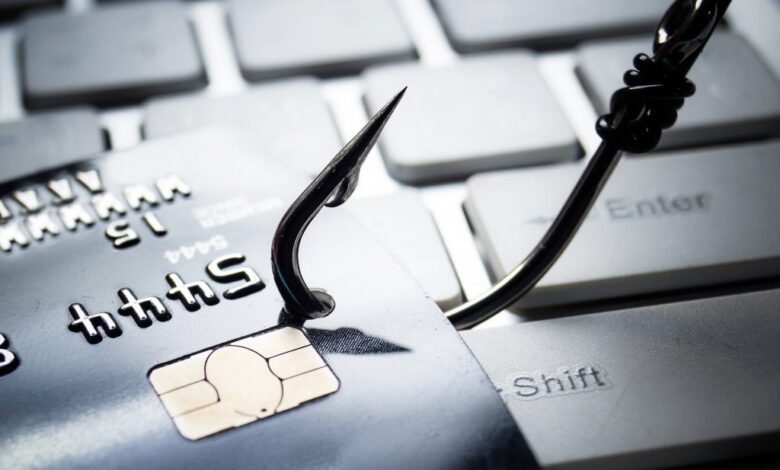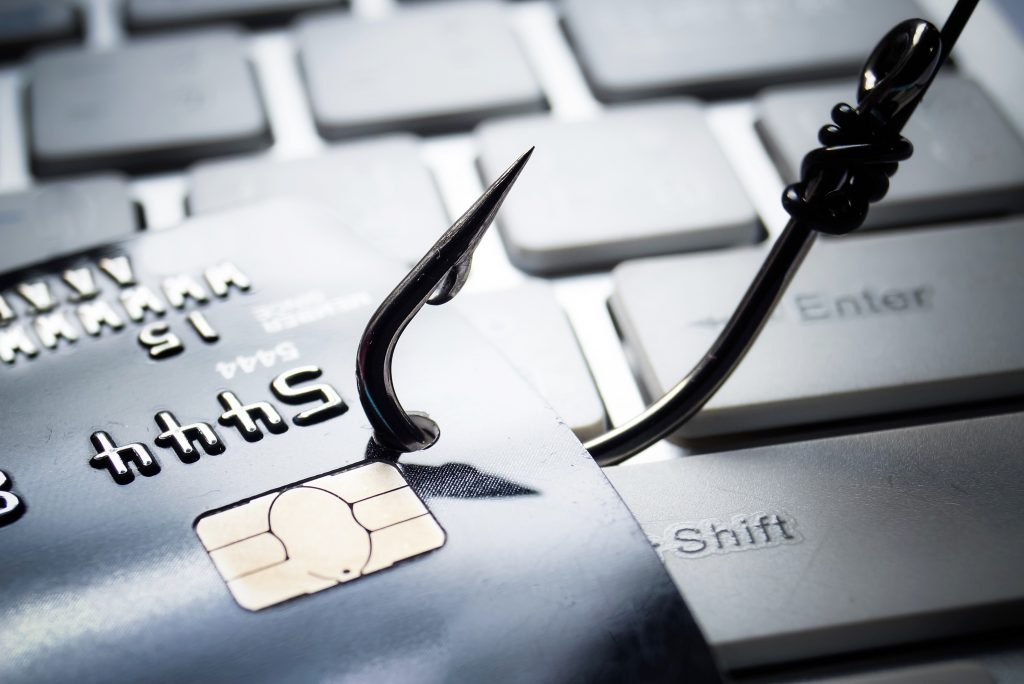
Difference Between Whale and Spear Phishing
Difference between whale phishing and spear phishing: Ever wondered about the subtle yet significant differences between these two sophisticated cyberattacks? Both target individuals for financial gain or data theft, but their approaches differ dramatically. Whale phishing goes after the big fish – high-profile executives or wealthy individuals – while spear phishing focuses on specific individuals within an organization.
This post dives into the tactics, impact, and defenses against both, helping you understand these threats and how to protect yourself.
We’ll explore the techniques used in each attack, the social engineering tricks employed, and the devastating consequences of a successful breach. We’ll also look at preventative measures and discuss real-world scenarios (hypothetical, of course!) to illustrate the dangers. Get ready to sharpen your cybersecurity awareness!
Defining Whale Phishing and Spear Phishing
So, we’ve talked about the broad strokes – phishing in general. Now let’s dive into two particularly nasty subspecies: whale phishing and spear phishing. Understanding their differences is crucial for protecting yourself and your organization from these targeted attacks. Both are incredibly sophisticated, but their approaches and targets differ significantly.
Whale phishing and spear phishing are both highly targeted forms of phishing attacks, but they differ significantly in their targets and methods. While both aim to steal sensitive information, their approaches are distinct and reflect different motivations.
Whale Phishing Targets and Motivations
Whale phishing focuses on high-value targets – the “whales” of the corporate world. Think CEOs, CFOs, board members, or other individuals with significant financial authority and access to large sums of money or sensitive data. The goal isn’t to compromise many accounts; it’s to gain access to a single, incredibly valuable account. The motivations are typically financial gain – a large transfer of funds, access to sensitive intellectual property for sale, or compromising a company’s financial standing for personal profit.
A successful whale phishing attack can result in millions, if not billions, of dollars in losses.
Spear Phishing Targets and Motivations
Spear phishing, on the other hand, is more focused on specific individuals within an organization, though not necessarily the highest-ranking ones. The attackers research their target, gathering information about their work, colleagues, and personal life to craft highly personalized phishing emails or messages. The goal is to gain access to sensitive information or install malware, often to steal data, disrupt operations, or gain a foothold for further attacks within the network.
The motivations are varied, ranging from industrial espionage to financial theft, depending on the target and the attacker’s goals. While the financial payoff might be smaller than a successful whale phishing attempt, the damage inflicted through data breaches or malware can still be significant.
Comparing Target Profiles
The key difference lies in the target profile. Whale phishing targets the highest-value individuals within an organization, those with access to significant financial resources or sensitive data. Spear phishing, while still targeted, casts a wider net within a specific organization, focusing on individuals whose compromised accounts can provide access to valuable information or systems. Think of it this way: whale phishing is a sniper shot aimed at the CEO, while spear phishing is a more dispersed attack, targeting key personnel to gain access to specific data or systems.
Comparing Motivations
While both attacks share a common thread of financial gain or data theft, the scale of the potential reward differs greatly. Whale phishing aims for a big score – a massive financial windfall – whereas spear phishing might be motivated by a variety of goals, including gaining access to sensitive intellectual property, disrupting operations, or establishing a foothold for a larger attack.
The motivation behind a spear phishing attack can be less purely financial, focusing on espionage or sabotage rather than simply stealing money.
Techniques Employed in Each Attack

Understanding the tactics used in whale and spear phishing attacks is crucial for effective defense. While both aim to steal sensitive information, their approaches differ significantly in scale, personalization, and sophistication. This section delves into the specific techniques employed in each type of attack.
Whale Phishing Techniques
Whale phishing targets high-value individuals, often executives or CEOs, requiring a more elaborate and personalized approach. The techniques employed are designed to exploit trust and leverage access to sensitive company information.
| Technique | Description | Example | Impact |
|---|---|---|---|
| Highly Personalized Emails | Emails meticulously crafted to mimic legitimate communications, often containing inside information or referencing past interactions. | An email appearing to be from a board member requesting urgent financial information, referencing a recent board meeting. | Compromised financial data, fraudulent transactions. |
| Social Engineering | Manipulating the target’s psychology through trust-building techniques to gain access or information. | Building rapport with the target through seemingly innocuous emails before requesting sensitive data. | Disclosure of sensitive credentials, confidential documents. |
| Exploiting Existing Relationships | Leveraging the target’s existing relationships (e.g., colleagues, clients) to create a sense of urgency or legitimacy. | An email seemingly from a trusted colleague requesting immediate wire transfer. | Unauthorized wire transfers, financial loss. |
| Sophisticated Malware | Deploying advanced malware that evades detection and allows remote access to the target’s system. | Malicious attachments or links disguised as legitimate documents, leading to system compromise. | Data theft, system control, ransomware infection. |
Spear Phishing Techniques
Spear phishing, while less targeted than whale phishing, still relies on highly personalized attacks focused on specific individuals or groups within an organization. The success of spear phishing often hinges on exploiting the victim’s familiarity with the attacker’s apparent identity.
The typical methods used in spear phishing attacks include:
- Targeted Emails: Emails are crafted to appear as if they are from a known and trusted source, often containing specific details about the recipient or their organization.
- Phishing Websites: Fake login pages mimicking legitimate websites are used to steal credentials.
- Malicious Documents: Documents containing macros or embedded malware are sent as attachments.
- Social Media Reconnaissance: Attackers gather information about their targets through social media platforms to personalize their attacks.
- Impersonation: Attackers may impersonate colleagues, clients, or other known contacts to build trust and gain access to information.
Comparison of Sophistication and Personalization
Whale phishing attacks generally exhibit a higher degree of sophistication and personalization than spear phishing. Whale phishing campaigns often involve extensive research on the target, resulting in highly tailored emails and social engineering tactics. Spear phishing, while personalized, usually relies on more readily available information and less intricate techniques. The difference lies in the scale and intensity of the research and the complexity of the employed techniques.
The level of personalization is directly correlated to the perceived value of the target; whale phishing targets high-value individuals, leading to a greater investment in personalization.
Social Engineering Aspects
Social engineering forms the crucial manipulative core of both whale phishing and spear phishing attacks. Success hinges not on technical prowess alone, but on the attacker’s ability to exploit human psychology and build trust to gain access to sensitive information or systems. Understanding the nuances of social engineering in each attack type is key to effective defense.
The effectiveness of both whale phishing and spear phishing relies heavily on crafting believable narratives and exploiting human vulnerabilities. While both leverage social engineering, the targets and the approach differ significantly, resulting in distinct tactics and levels of sophistication.
Social Engineering in Whale Phishing
Whale phishing targets high-value individuals – CEOs, CFOs, or other executives – who often have access to significant financial resources or sensitive company data. Attackers meticulously research their targets, gathering information about their personal lives, professional roles, and even their social circles. This information is then used to create highly personalized phishing emails or messages that appear legitimate and trustworthy.
The goal is to build rapport and establish a sense of urgency, often leveraging a sense of responsibility or fear of negative consequences to manipulate the victim into taking action. For example, an attacker might impersonate a board member requesting urgent financial information or pose as a trusted vendor requiring immediate payment to avoid service disruption. The higher the perceived value of the target, the more elaborate the social engineering techniques employed.
Social Engineering in Spear Phishing, Difference between whale phishing and spear phishing
Spear phishing, while also reliant on social engineering, typically targets individuals within a specific organization or group. The attacker’s research is focused on identifying individuals who hold specific roles or possess access to particular systems or data. The goal is less about exploiting a high-profile individual’s financial assets and more about gaining access to sensitive company information, intellectual property, or confidential data.
This might involve impersonating a colleague, a client, or a superior to trick the victim into opening a malicious attachment, clicking a malicious link, or revealing sensitive credentials. The social engineering aspect often centers around creating a sense of normalcy and urgency within the context of the victim’s professional environment. For instance, an attacker might send an email seemingly originating from the IT department requesting password changes or a seemingly legitimate invoice from a known vendor.
Comparison of Social Engineering Tactics
The following table compares social engineering tactics used in whale and spear phishing attacks:
| Tactic | Whale Phishing Example | Spear Phishing Example | Effectiveness |
|---|---|---|---|
| Impersonation | Email from a fake “board member” requesting urgent wire transfer. | Email from a fake “colleague” requesting login credentials for a shared document. | High, especially with well-researched impersonation. |
| Urgency/Scarcity | Threat of legal action if payment isn’t made immediately. | Notification of an impending system shutdown unless action is taken immediately. | High; creates pressure to act without careful consideration. |
| Trust Building | Personalized email referencing the target’s recent achievements or personal interests. | Email seemingly originating from a known and trusted internal system or individual. | High; makes the phishing attempt seem legitimate and trustworthy. |
| Emotional Manipulation | Playing on the target’s fear of job loss or financial ruin. | Playing on the target’s sense of responsibility or desire to help a colleague. | High; bypasses rational decision-making processes. |
Impact and Consequences

The success of both whale phishing and spear phishing attacks can lead to devastating financial and reputational consequences for individuals and organizations. Understanding the specific impacts of each type of attack is crucial for implementing effective preventative measures. The scale of damage, however, varies significantly depending on the target and the sensitivity of the information compromised.
Financial Consequences of Whale Phishing
Whale phishing, targeting high-value individuals, often results in substantial financial losses. These attacks aim to steal large sums of money directly, or to gain access to assets that can be liquidated quickly. The financial impact can include direct theft of funds from bank accounts, investment accounts, or cryptocurrency wallets. It can also involve fraudulent transactions, such as unauthorized wire transfers or the purchase of assets using stolen credentials.
For example, a successful attack on a CEO could lead to millions of dollars being siphoned off through fraudulent invoices or investment schemes. The costs associated with investigations, legal fees, and remediation efforts further compound these losses.
Reputational Damage from Whale Phishing
Beyond the immediate financial losses, a successful whale phishing attack can inflict severe reputational damage. Public disclosure of the attack can damage the victim’s credibility and trustworthiness. This is especially true for high-profile individuals, such as CEOs or celebrities, whose reputation is closely tied to their public image. The resulting negative media coverage can lead to loss of investor confidence, damage to brand value, and difficulties in securing future business opportunities.
The long-term effects on personal and professional relationships can also be significant.
Consequences of Spear Phishing on Organizations
Spear phishing attacks targeting organizations can have a wide range of consequences, impacting various aspects of the business. The immediate impact might involve data breaches, leading to the exposure of sensitive customer information, intellectual property, or trade secrets. This can result in hefty fines for non-compliance with data protection regulations, such as GDPR or CCPA. Further, the disruption of operations due to compromised systems or malware infections can lead to significant downtime and lost productivity.
Operational Disruptions from Spear Phishing
Operational disruptions caused by spear phishing can be extensive and long-lasting. The recovery process from a successful attack can be complex and time-consuming, requiring the involvement of IT specialists, legal counsel, and public relations professionals. The costs associated with incident response, system restoration, and employee retraining can be substantial. In addition, the damage to employee morale and trust can hinder productivity and efficiency for an extended period.
A successful spear phishing campaign targeting an organization’s HR department, for instance, could result in significant payroll fraud or the unauthorized release of employee data.
Comparison of Overall Impact
While both whale phishing and spear phishing are serious threats, their impact differs in scale and scope. Whale phishing focuses on high-value targets, leading to significant individual financial losses and reputational damage. Spear phishing, on the other hand, targets organizations, causing broader operational disruptions, data breaches, and reputational damage to the entire entity. The financial impact of spear phishing can also be substantial, but it’s often distributed across various aspects of the organization, rather than concentrated on a single individual.
Categorized Consequences
To better understand the implications, let’s categorize the potential consequences:
Whale Phishing:
- Financial: Direct theft of funds, fraudulent transactions, costs of investigation and remediation.
- Reputational: Damage to personal credibility, loss of trust, negative media coverage.
- Operational: Minimal direct operational impact, but potential indirect effects on business if the victim is a key decision-maker.
Spear Phishing (Organizational Target):
- Financial: Fines for data breaches, costs of incident response, lost productivity, potential fraud.
- Reputational: Damage to brand image, loss of customer trust, negative media coverage.
- Operational: System downtime, data breaches, disruption of business processes, employee retraining costs.
Protective Measures

Protecting yourself from the devastating effects of whale and spear phishing requires a multi-layered approach encompassing technical safeguards, employee training, and robust security policies. Both attack vectors exploit human vulnerabilities, but their targets and methods differ, necessitating tailored preventative measures. While complete prevention is impossible, significantly reducing the risk is achievable through diligent implementation of best practices.Effective security measures must address both technical vulnerabilities and human susceptibility to social engineering tactics.
A robust defense involves strengthening technical infrastructure, implementing strict access controls, and educating employees to recognize and report suspicious activity. Regular security awareness training is crucial, as it’s often the weakest link in the security chain.
Security Measures Against Whale and Spear Phishing
Implementing a strong security posture requires a combination of technical and human-centric approaches. For whale phishing, the focus shifts towards protecting high-value targets, while spear phishing necessitates a more widespread, general awareness campaign.
- Multi-Factor Authentication (MFA): MFA adds an extra layer of security, making it significantly harder for attackers to access accounts even if they obtain credentials. This is highly effective against both whale and spear phishing.
- Email Security Solutions: Employing advanced email security solutions that incorporate anti-phishing filters, sandboxing, and anomaly detection can identify and block malicious emails before they reach users’ inboxes. This is particularly effective against spear phishing, which relies on convincing emails.
- Regular Security Awareness Training: Educating employees about phishing techniques, identifying suspicious emails, and practicing safe online habits is crucial. This is equally important for both whale and spear phishing, as both rely on social engineering.
- Strong Password Policies and Password Management: Enforcing strong, unique passwords for all accounts and using a password manager can significantly reduce the risk of credential compromise. This is crucial for both attack types.
- Access Control and Least Privilege: Implementing the principle of least privilege restricts user access to only the information and resources they need. This limits the damage if an account is compromised, beneficial against both.
- Regular Security Audits and Penetration Testing: Regularly assessing vulnerabilities and simulating attacks helps identify weaknesses in the security infrastructure before attackers can exploit them. This is beneficial for both.
- Endpoint Detection and Response (EDR): EDR solutions monitor endpoint devices for malicious activity and can detect and respond to attacks in real-time, providing valuable protection against both types of attacks.
Comparison of Preventative Measure Effectiveness
The effectiveness of preventative measures varies depending on the sophistication of the attack and the target. Whale phishing, targeting high-value individuals, often requires more targeted and sophisticated defenses. Spear phishing, while less targeted, can be equally damaging if successful.
| Measure | Effectiveness against Whale Phishing | Effectiveness against Spear Phishing | Implementation Difficulty |
|---|---|---|---|
| Multi-Factor Authentication (MFA) | High | High | Medium |
| Email Security Solutions | Medium | High | Medium |
| Security Awareness Training | Medium | Medium | Low |
| Strong Password Policies | Medium | Medium | Low |
| Access Control and Least Privilege | High | High | High |
| Regular Security Audits | High | High | High |
| Endpoint Detection and Response (EDR) | High | High | Medium |
Case Studies (Illustrative, No Links)
This section presents two hypothetical case studies, one illustrating a successful whale phishing attack and the other a successful spear phishing attack. These examples highlight the different techniques and targets employed in each type of attack and the resulting consequences. The goal is to provide a clearer understanding of the nuances between these two sophisticated phishing strategies.
Successful Whale Phishing Attack: Targeting the CEO
Imagine a scenario where a large multinational corporation, “GlobalTech,” is targeted. The attackers meticulously research the CEO, Mr. Alexander Reed, gathering information about his family, hobbies, and even his preferred vacation destinations from publicly available sources and social media. They then craft a highly personalized email, seemingly from a trusted business partner, detailing a supposedly urgent, multi-million dollar investment opportunity.
The email contains convincing forged documents, including what appears to be a legitimate contract and financial projections. The attacker leverages the CEO’s position and authority, suggesting that swift action is required to avoid significant financial losses for the company. Mr. Reed, believing the email to be genuine, authorizes the transfer of a substantial sum of money to an offshore account controlled by the attackers.
The attackers successfully exploit the CEO’s authority and trust, resulting in a significant financial loss for GlobalTech, and reputational damage. The sophisticated nature of the attack, coupled with the personalized approach, made it exceptionally difficult to detect. The lack of internal controls and awareness around such targeted attacks contributed to the success of the phishing campaign.
So, whale phishing targets high-value individuals, while spear phishing is more focused. It’s a bit like the difference in scale between building a simple app using low-code tools and developing a complex enterprise solution; check out this article on domino app dev the low code and pro code future for a better understanding of that contrast.
Understanding these nuances is crucial, whether you’re defending against sophisticated cyberattacks or building robust applications; both require a strategic approach.
Successful Spear Phishing Attack: Targeting the Finance Department
In this case, a smaller accounting firm, “Precision Accounts,” is targeted. The attackers focus on a specific employee within the finance department, Sarah Miller, known to handle wire transfers. They spend time researching Sarah’s professional background and social media activity, discovering her recent engagement announcement. They craft a convincing phishing email disguised as a legitimate vendor invoice related to wedding planning services.
The email includes a link to a fake invoice that looks authentic, leading Sarah to a convincingly replicated login page for the company’s financial software. Once Sarah enters her credentials, they are captured by the attackers. The attackers then use Sarah’s credentials to access the company’s financial system and initiate unauthorized wire transfers. This attack relies on the element of surprise and exploiting the victim’s personal life to create a sense of urgency and bypass normal security protocols.
The relative simplicity of the email and the lack of rigorous multi-factor authentication within the accounting firm’s systems facilitated the successful execution of this attack.
Comparison of the Two Case Studies
The whale phishing attack against GlobalTech targeted a high-value individual with a significant level of authority, relying on a high degree of personalization and sophisticated manipulation. The spear phishing attack against Precision Accounts, however, targeted a specific individual with access to sensitive financial information, exploiting a more common vulnerability and using a less personalized, though still convincingly deceptive, approach. Both attacks were successful due to a combination of social engineering techniques and vulnerabilities within the organizations’ security systems.
The whale phishing attack resulted in a much larger financial loss, but the spear phishing attack highlights the potential for significant damage even when targeting lower-level employees with access to critical systems. The difference lies in the scale of the impact and the sophistication of the techniques employed. The whale phishing attack required extensive research and a highly personalized approach, while the spear phishing attack was more focused on exploiting a specific vulnerability within a system.
Final Conclusion
Understanding the difference between whale and spear phishing is crucial in today’s digital landscape. While both attacks leverage social engineering and exploit human vulnerabilities, their targets and techniques differ significantly. By understanding these distinctions, you can better implement preventative measures, both personally and within your organization. Remember, staying informed and vigilant is your best defense against these sophisticated attacks.
Stay safe out there!
Helpful Answers: Difference Between Whale Phishing And Spear Phishing
What’s the biggest difference between the impact of whale and spear phishing?
Whale phishing typically results in significantly larger financial losses due to targeting high-value individuals. Spear phishing, while still damaging, often aims for data breaches or disruption of operations.
Can I be a victim of both whale and spear phishing?
Yes, absolutely. You could be targeted in a spear phishing campaign as part of a larger organizational attack, and separately, targeted as a “whale” due to your public profile or perceived wealth.
Are there any specific email indicators to watch out for?
Both attacks often use highly personalized emails, but whale phishing emails might contain more flattering or authoritative language to gain trust. Look for unusual requests, urgent tones, and links that don’t quite match the sender’s domain.
How often do these attacks occur?
Both whale and spear phishing attacks are constantly evolving and unfortunately, quite common. Sophisticated threat actors are always looking for new ways to exploit vulnerabilities.





